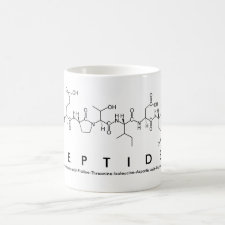
Authors: Yang C, Lv TW, Yan HY, Wu GC, Li HN
Article Title: Glyoxal-Urea-Formaldehyde Molecularly Imprinted Resin as Pipette Tip Solid-Phase Extraction Adsorbent for Selective Screening of Organochlorine Pesticides in Spinach.
Publication date: 2015
Journal: Journal of Agricultural and Food Chemistry
Volume: 63
Issue: (43)
Page numbers: 9650-9656.
DOI: 10.1021/acs.jafc.5b02762
Abstract: A new kind of glyoxal-urea-formaldehyde molecularly imprinted resin (GUF-MIR) was synthesized by a glyoxal-urea-formaldehyde (GUF) gel imprinting method with 4,4'-dichlorobenzhydrol as a dummy template. The obtained GUF-MIR was characterized by scanning electron microscopy (SEM) and Fourier transform infrared spectroscopy (FT-IR) and applied as a selective adsorbent of miniaturized pipet tip solid-phase extraction (PT-SPE) for the separation and extraction of three organochlorine pesticides (dicofol (DCF), dichlorodiphenyl dichloroethane (DDD), and tetradifon) in spinach samples. The proposed pretreatment procedures of spinach samples involved only 5.0 mg of GUF-MIR, 0.7 mL of MeOH-H2O (1:1, v/v) (washing solvent), and 0.6 mL of cyclohexane-ethyl acetate (9:1, v/v) (elution solvent). In comparison with other adsorbents (such as silica gel, C18, NH2-silica gel, and neutral alumina (Al2O3-N)), GUF-MIR showed higher adsorption and purification capacity for DCF, DDD, and tetradifon in aqueous solution. The average recoveries at three spiked levels ranged from 89.1% to 101.9% with relative standard deviations (RSDs) £ 7.1% (n = 3). The presented GUF-MIR-PT-SPE method combines the advantages of molecularly imprinted polymers (MIPs), GUF, and PT-SPE and can be used in polar solutions with high affinity and selectivity to the analytes in complex samples
Template and target information: dummy template, 4,4'-dichlorobenzhydrol, organochlorine pesticides, dicofol, DCF, dichlorodiphenyl dichloroethane, DDD, tetradifon
Author keywords: glyoxal-urea-formaldehyde gel, molecularly imprinted resin, pipet tip solid-phase extraction, organochlorine pesticides, spinach



Join the Society for Molecular Imprinting

New items RSS feed
Sign-up for e-mail updates:
Choose between receiving an occasional newsletter or more frequent e-mail alerts.
Click here to go to the sign-up page.
Is your name elemental or peptidic? Enter your name and find out by clicking either of the buttons below!
Other products you may like:
 MIPdatabase
MIPdatabase









